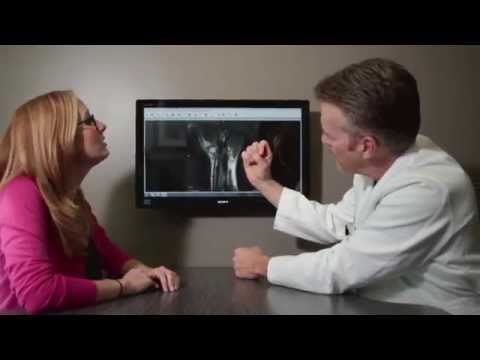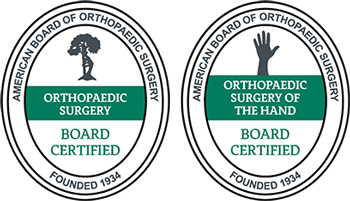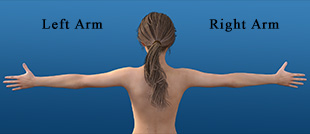What Is Bowstringing? Causes, Symptoms and Treatments
Your hands contain 27 bones each, the most of any human body part. These bones work together with muscles, tendons, and ligaments to help you perform complex tasks and movements. This means you can also develop a variety of hand injuries and medical conditions. One rare, but painful condition involving the hands and fingers is called bowstringing. If you’ve been experiencing finger discomfort, read on to learn more about this condition, including its causes, common symptoms, and treatment options.
Contents
What Is Bowstringing?

Image via Flickr bynate steiner
Bowstringing is a rare hand injury that involves finger trigger movements. Each finger in your hand has three bones, known as the proximal, middle, and distal phalanges. You also have tendons that connect muscle to your bone, and five flexor tendon pulleys that help connect the tendon to the phalanges. These pulleys are known as A1-A5, where A1 refers to the pulley closest to the palm and A5 refers to the pulley closest to the fingertip. To further your understanding of bowstringing, here are descriptions of each pulley:
- First annular pulley (A1): This joint pulley attaches near the head of the metacarpal bone in the palm of your hand and extends to the base of the first knuckle.
- Second annular pulley (A2): This pulley extends from the bottom of your finger to your top knuckle, where the proximal and distal phalanges meet on the palm side of your hand.
- Third annular pulley (A3): The A3 pulley is the smallest of the joint pulleys and extends across the middle knuckle of your hand, called the proximal phalangeal joint.
- Fourth annular pulley (A4): The A4 pulley is in the mid-section of the middle phalanx, meaning it’s between the two knuckles closest to your fingertips.
- Fifth annular pulley (A5): This joint pulley is below your fingernails, meaning it’s near the joints of your fingertips.
Bowstringing occurs when one pulley malfunctions or ruptures, causing pain and stiffness in the fingers. It often involves a pulley located in the middle finger, like the A2 or A4. These pulleys activate the most out of the five when you bend your finger, so bowstringing involving these pulleys can result in increased finger stiffness or immobility. While bowstringing can also occur in other tendons, like the wrist or forearm, the term is most commonly used to refer to conditions of the finger.
Causes of Bowstringing
Bowstringing can result from excessive external stress on the fingertip that causes one or more of the essential flexor tendon pulleys to rupture. This external stress result from putting an excess weight on a pulley, angling the phalanges and joints away from a joint’s center of rotation, or a combination of both occurrences. Bowstringing can also occur when deep cuts to the hands and fingers sever a pulley.
Bowstringing often presents in athletes, especially those who rely heavily on their hands. Rock climbers, for example, often carry their full body weight in their fingers, which may cause flexor tendon rupture. Baseball pitchers may also be susceptible to this type of injury, as they use their fingers to perform intense repetitive actions. Bowstringing can occur over time because of repeated wear on the trigger pulley system. As a result, some patients experience a slow progression of symptoms over many years.
Common Bowstringing Symptoms
In extreme bowstringing cases where the individual experiences multiple pulley ruptures, the tendon can bulge out against the skin. In these cases, the tendon appears taught like a bowstring between its remaining points of attachment. Other bowstringing cases may present with less obvious symptoms, like generalized swelling or pain in the fingers. If you’re concerned that you’re experiencing bowstringing, compare your experiences to the following symptoms:
- Auditory popping during the moment of injury.
- Tenderness or pain on the palm side of your finger.
- Swelling of the affected area.
- Pain when squeezing finger.
- Pain or difficulty when extending finger fully.
- Pain or difficulty when trying to bend fingers.
- Pain or difficulty when trying to curl fingers into a fist.
If you experienced an injury, you can test it to see whether it’s connected to the tendon and pulley symptoms. To do this, use your uninjured hand to hold the two phalanges closest to your palm straight on your injured finger, then attempt to bend just the fingertip . Next, use your uninjured hand to brace all your fingers in an extended position and attempt to bend the affected finger toward your palm. If you struggle with either of these activities, your injury might have resulted in bowstringing. Medical practitioners can use an ultrasound machine to confirm this diagnosis.
Treatment Options for Bowstringing
The treatment options for bowstringing depend on which pulley is malfunctioning. Ruptures in the A2 pulley and most ruptures in the A4 pulley are best treated with surgery. Surgery may also be necessary in cases with multiple ruptures or delayed treatment. Bowstring corrective surgery involves using a tendon graft taken from the patient’s wrist to reconstruct the torn pulley. To accomplish this, surgeons can wrap the tendon graft around the tendon and bone at the pulley rupture site. You can often treat partial tears or ruptures in the A1, A3, or A5 pulleys with non-surgical interventions, like splints or physical therapy.
Another treatment option is to wear a ring over the injured pulley as a brace. Rest is also an important part of any bowstringing treatment plan. If you experience a mild pulley injury while playing a sport, for instance, your specialist may advise you to stop the activity until your fingers no longer experience pain or swelling. For those recovering from more severe pulley ruptures, particularly those resulting in surgery, the period of recovery may last several months, with certain activity restrictions for up to a year.
Contact the Hand and Wrist Institute!
If you’re experiencing symptoms of bowstringing, visit our team at The Hand and Wrist Institute for expert medical care. Our specialists can determine if a pulley injury has occurred, if it’s resulted in bowstringing, and what the best treatment options are to help you fully recover. Contact us online or call us at 855-558-4263 for more information. We’re ready to answer your questions 24 hours a day, seven days a week.

























